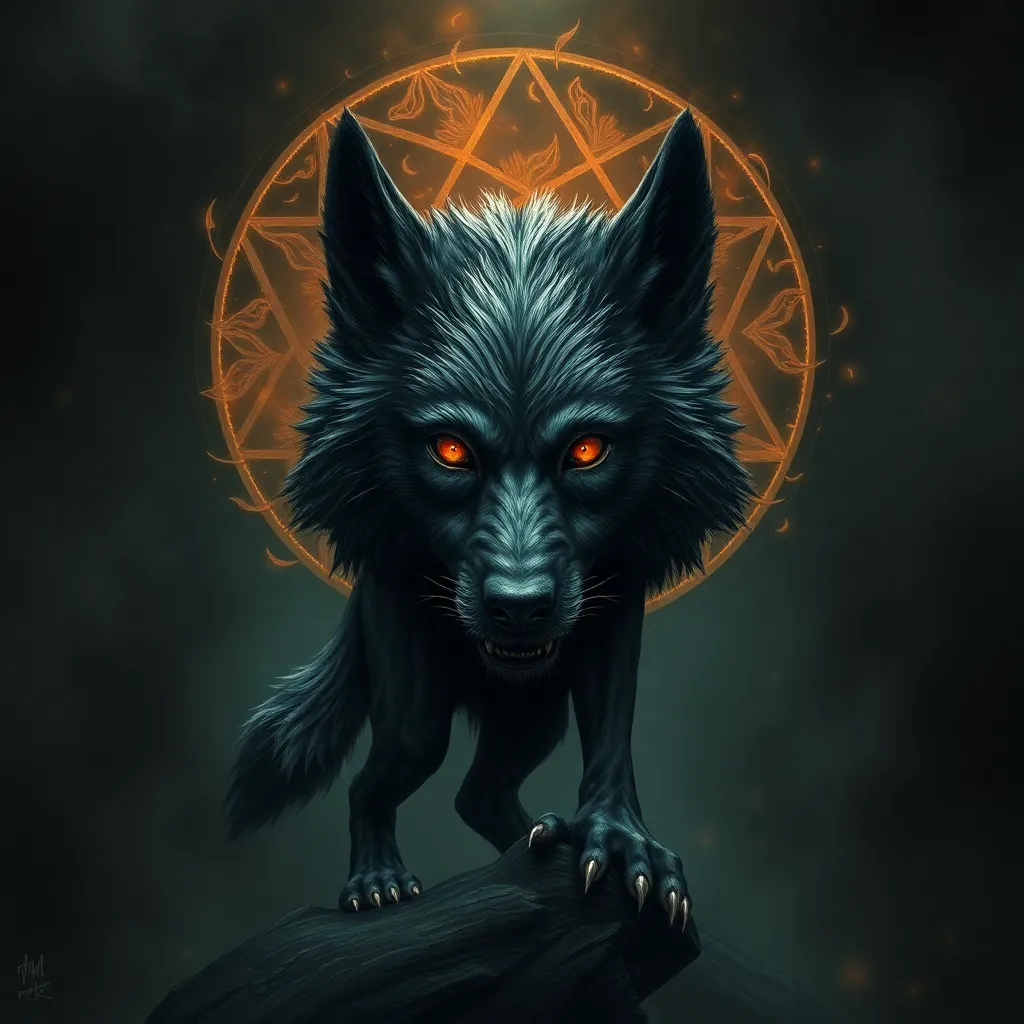The Werewolf’s Soul: Exploring the Spiritual and Religious Dimensions of Lycanthropy
I. Introduction
Lycanthropy, commonly known as the ability to transform into a wolf or wolf-like creature, has fascinated cultures across the globe for centuries. This concept not only encompasses the physical transformation but also delves deep into the cultural significance and the psychological implications of such metamorphosis. In this article, we will explore the spiritual and religious dimensions of lycanthropy, highlighting its roots in folklore and its reinterpretation in modern media.
The werewolf archetype, often depicted as a tragic figure caught between two worlds, serves as a powerful symbol in various narratives. Its representation in folklore, literature, and contemporary media has evolved, yet the underlying themes of duality, inner conflict, and transformation remain prominent.
II. Historical Context of Lycanthropy
To fully appreciate the complexities of lycanthropy, it is essential to trace its historical roots. The origins of this phenomenon can be found in ancient myths and legends, where humans were believed to possess the ability to transform into wolves for various reasons, including survival and spiritual enlightenment.
- A. Origins of lycanthropy in ancient myths and legends: Many cultures have stories of werewolves or wolf-like beings. In Norse mythology, the tale of the berserkers describes warriors who donned wolf pelts to gain strength and ferocity. Similarly, in Greek mythology, the story of Lycaon speaks of a man transformed into a wolf by Zeus as punishment for his impiety.
- B. The evolution of werewolf narratives across cultures: As societies evolved, so did the narratives surrounding werewolves. The medieval period saw the rise of witch hunts and trials, where those accused of witchcraft were often labeled as werewolves, representing society’s fear of the unknown.
- C. Notable historical cases and societal responses: Historical cases, such as the infamous werewolf trials in France during the 16th century, illustrate how fear and superstition fueled societal responses to lycanthropy, often resulting in persecution and execution.
III. Spiritual Interpretations of Lycanthropy
The spiritual dimensions of lycanthropy transcend mere folklore, inviting individuals to explore their inner selves. The werewolf serves as a potent symbol of inner conflict and the duality of human existence.
- A. The werewolf as a symbol of inner conflict and duality: The struggle between human nature and animal instincts is a central theme in werewolf narratives. This dichotomy reflects the broader human experience of grappling with personal demons and societal expectations.
- B. The transformative journey: Shamanic practices and animalistic traits: In many shamanic traditions, the concept of shape-shifting is revered. Practitioners often seek to embody animal traits to gain wisdom and insight, paralleling the transformative journey of the werewolf.
- C. The role of dreams and visions in understanding lycanthropic experiences: Dreams and visions can serve as gateways to understanding one’s connection to animalistic impulses, revealing deeper truths about personal identity and spiritual growth.
IV. Religious Perspectives on Werewolves
Religious interpretations of lycanthropy are varied, with many traditions offering unique insights into the nature of transformation and its moral implications.
- A. Examination of werewolves in religious texts and folklore: Some religious texts allude to beings capable of transformation, often as a metaphor for moral decay or spiritual corruption.
- B. The connection between lycanthropy and concepts of sin and redemption: In certain belief systems, the act of becoming a werewolf can symbolize a fall from grace, while the journey back to humanity can represent redemption and spiritual awakening.
- C. Comparative analysis of werewolf beliefs in major world religions: Different religions interpret lycanthropy through various lenses, such as sin in Christianity, transformation in Hinduism, and duality in indigenous spiritual practices.
V. The Werewolf Archetype in Modern Spiritual Movements
In recent years, there has been a resurgence of interest in paganism and nature-based spirituality, where the werewolf archetype is often embraced as a symbol of empowerment.
- A. The resurgence of interest in paganism and nature-based spirituality: Many contemporary spiritual movements draw upon ancient wisdom, celebrating the werewolf as a representation of humanity’s connection to nature and primal instincts.
- B. Werewolves as symbols of personal empowerment and spiritual awakening: The werewolf can be viewed as a figure of strength, resilience, and transformation, encouraging individuals to embrace their authentic selves.
- C. Community practices and rituals surrounding lycanthropic beliefs: Modern spiritual communities often engage in rituals that honor the werewolf, fostering a sense of belonging and shared identity.
VI. Psychological Dimensions of Lycanthropy
The psychological implications of identifying with werewolf mythology are profound, offering insights into mental health and personal transformation.
- A. The psychological implications of identifying with werewolf mythology: For some, identifying with werewolves can serve as a coping mechanism, aiding in the navigation of complex emotions and experiences.
- B. Lycanthropy as a metaphor for mental health struggles and transformations: The transformation into a werewolf can symbolize the struggle with mental health issues, representing the journey from darkness to acceptance and healing.
- C. The therapeutic potential of exploring werewolf narratives: Engaging with werewolf stories can provide a therapeutic outlet, allowing individuals to explore their fears and desires in a safe and imaginative space.
VII. Werewolves in Contemporary Media and Popular Culture
Werewolves have made significant appearances in contemporary media, shaping public perception and understanding of lycanthropy.
- A. Analysis of werewolf representations in film, literature, and art: From classic horror films to modern TV shows, werewolves are often portrayed as both monsters and misunderstood beings, reflecting society’s complex relationship with the concept of transformation.
- B. How modern portrayals influence public perception of lycanthropy: The dual representation of werewolves in media has led to a more nuanced understanding of their symbolism, balancing horror with a deeper exploration of identity.
- C. The balance between horror and spirituality in contemporary narratives: Modern narratives often weave elements of horror with themes of self-discovery, emphasizing the spiritual journey that accompanies the werewolf transformation.
VIII. Conclusion
The exploration of lycanthropy reveals its rich spiritual and religious significance, reflecting humanity’s ongoing struggle with identity, transformation, and the duality of existence. The werewolf archetype, as both a horror figure and a symbol of empowerment, continues to resonate in modern society.
As we delve deeper into the narratives surrounding werewolves, we invite further exploration and reflection on personal interpretations of lycanthropy. Whether viewed through the lens of folklore, spirituality, or psychology, the werewolf remains a powerful symbol of the human experience.



